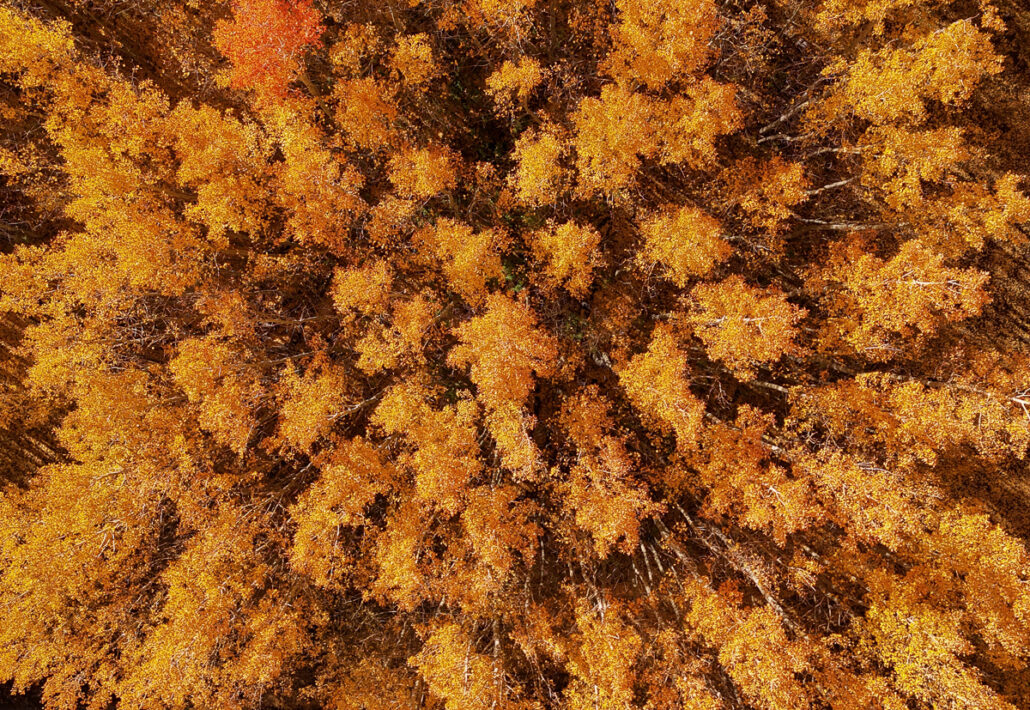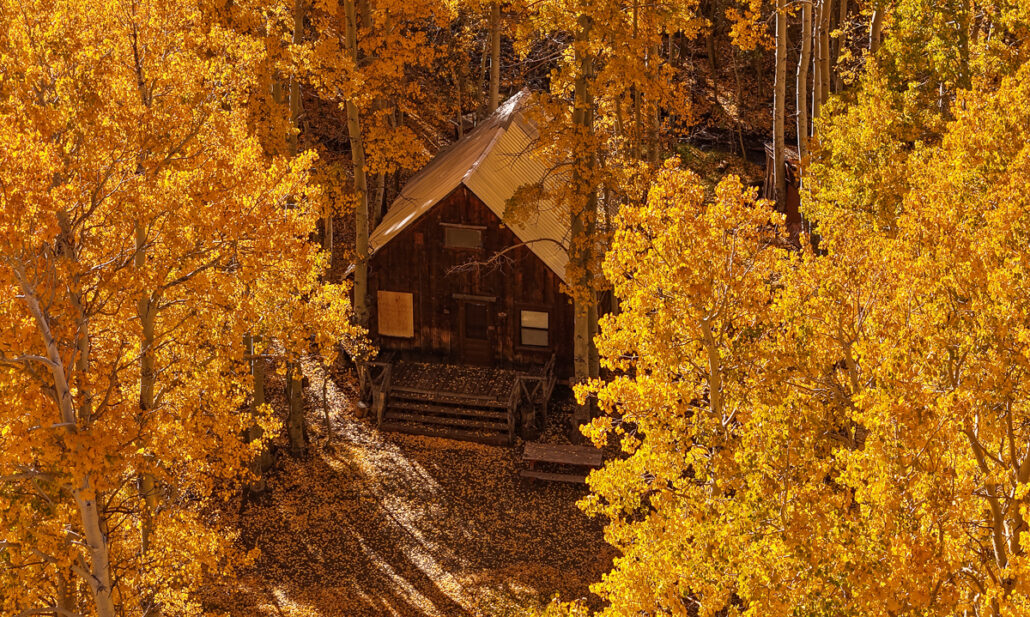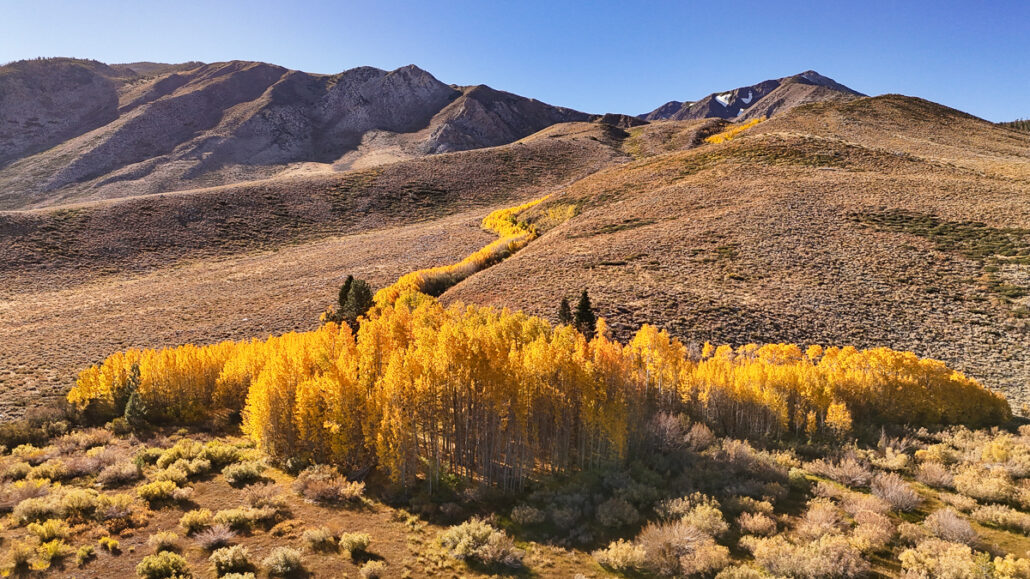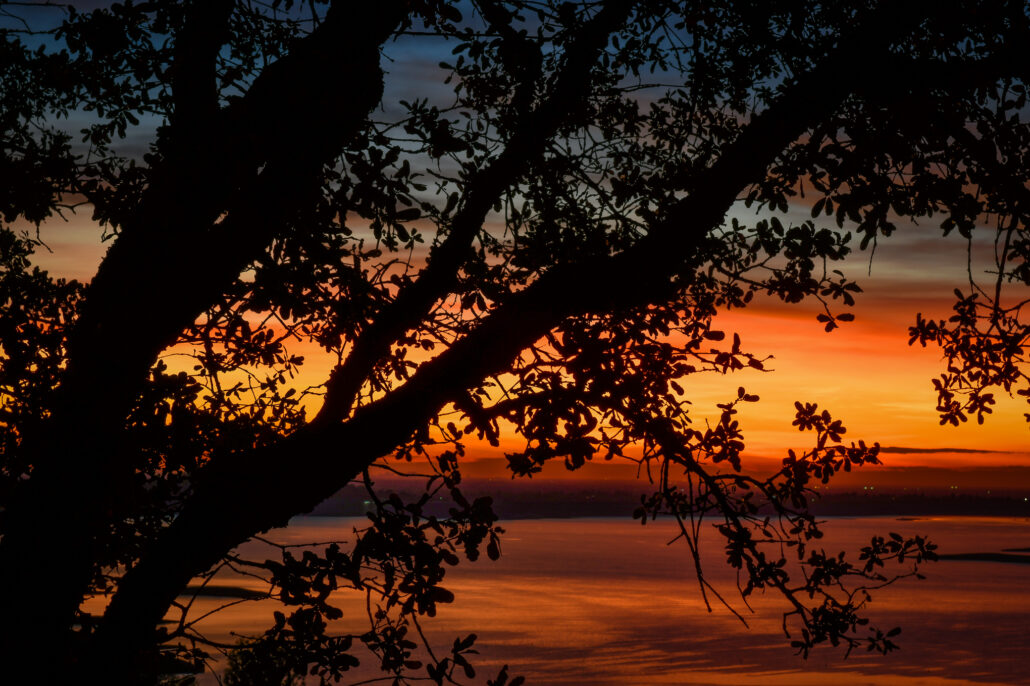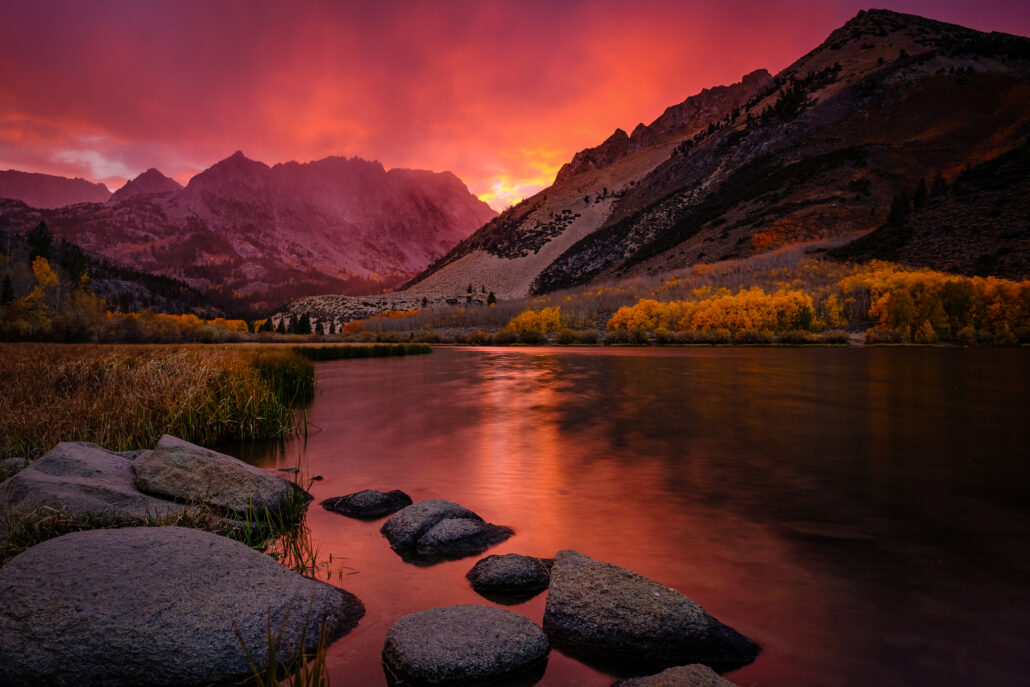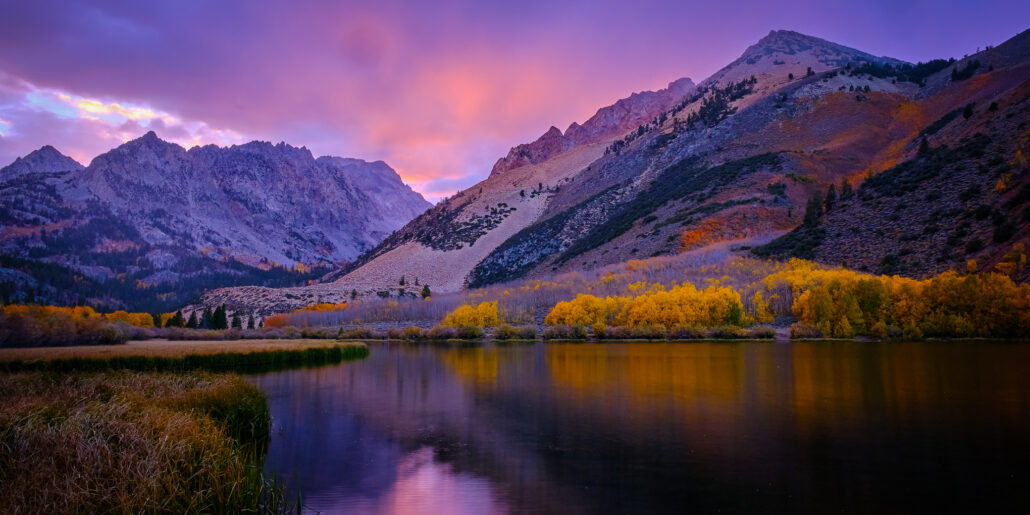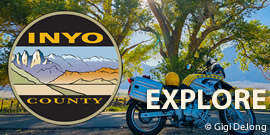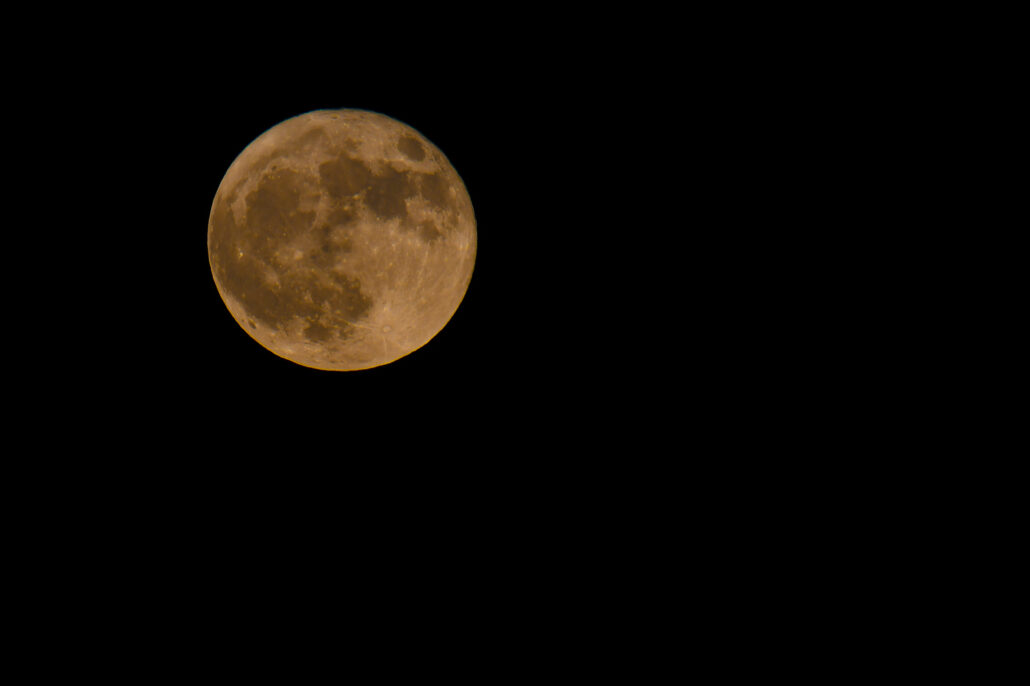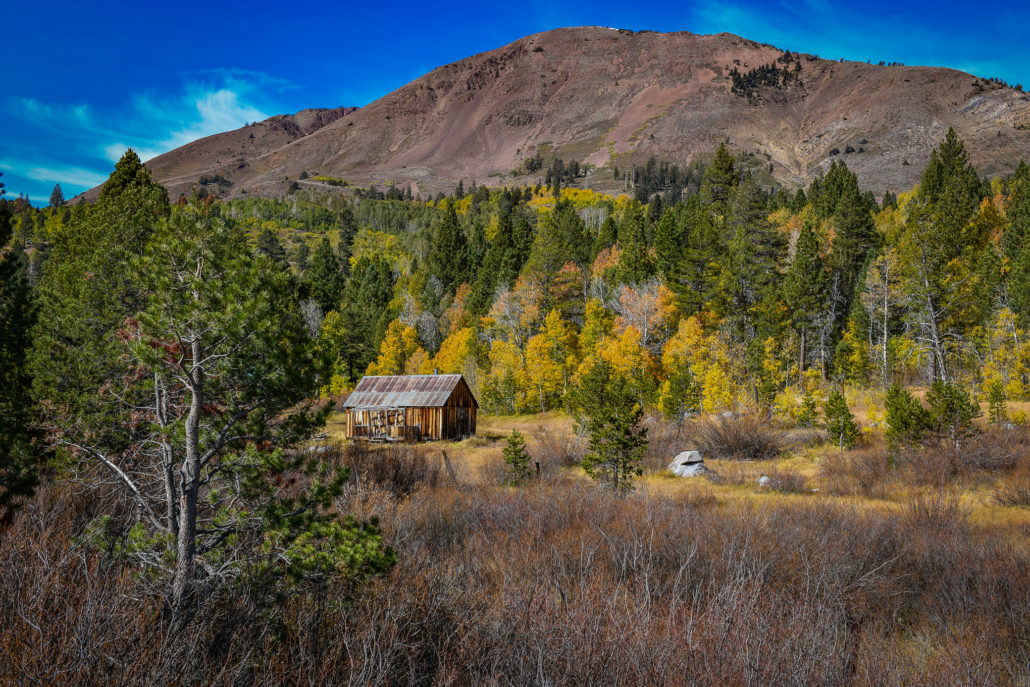Shine On
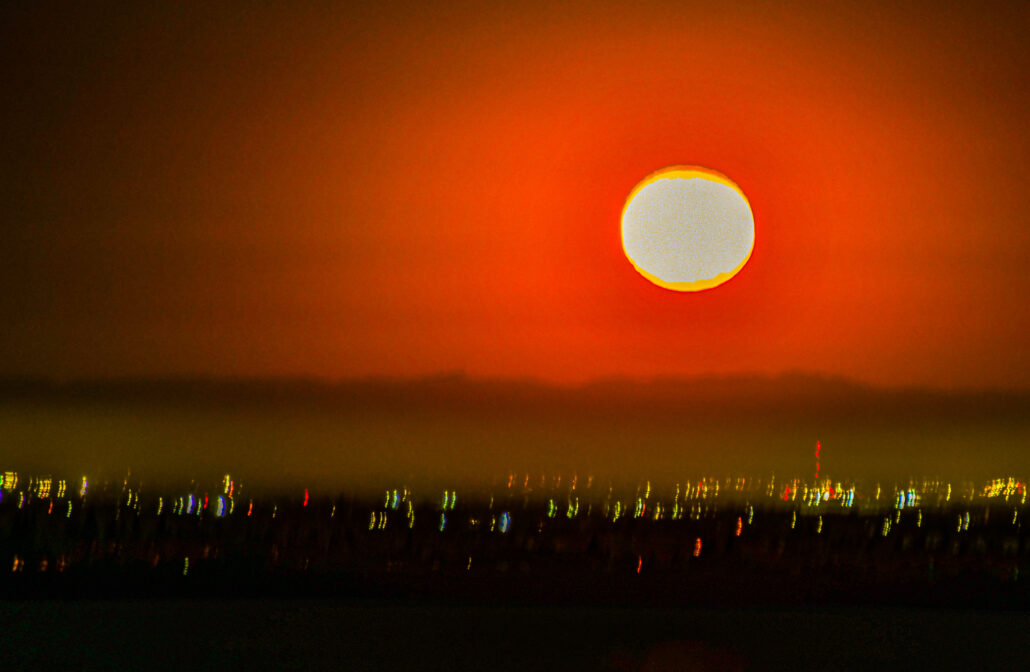
Friday morning’s Full Corn Moon will be the fourth and final supermoon of 2023.
Because a supermoon’s orbit is flatter than normal, the moon is closer to Earth and appears larger. This phenomenon is exaggerated by the atmosphere, as it rises and sets.
Once in a blue moon, it is full twice in a month, ergo the expression.
CLICK HERE to read how to photograph the Harvest Moon on September 29 (the full moon closest to the autumnal equinox). The above image was not taken using any of those techniques, but was captured as an abstraction of what will be seen. The following two shots were taken using the techniques.
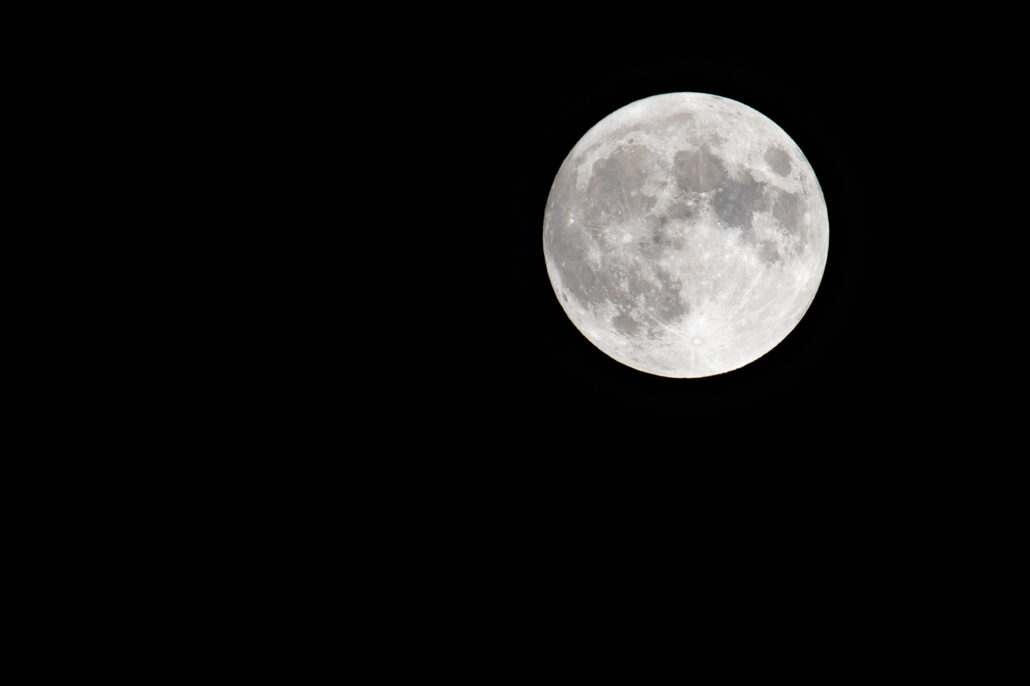
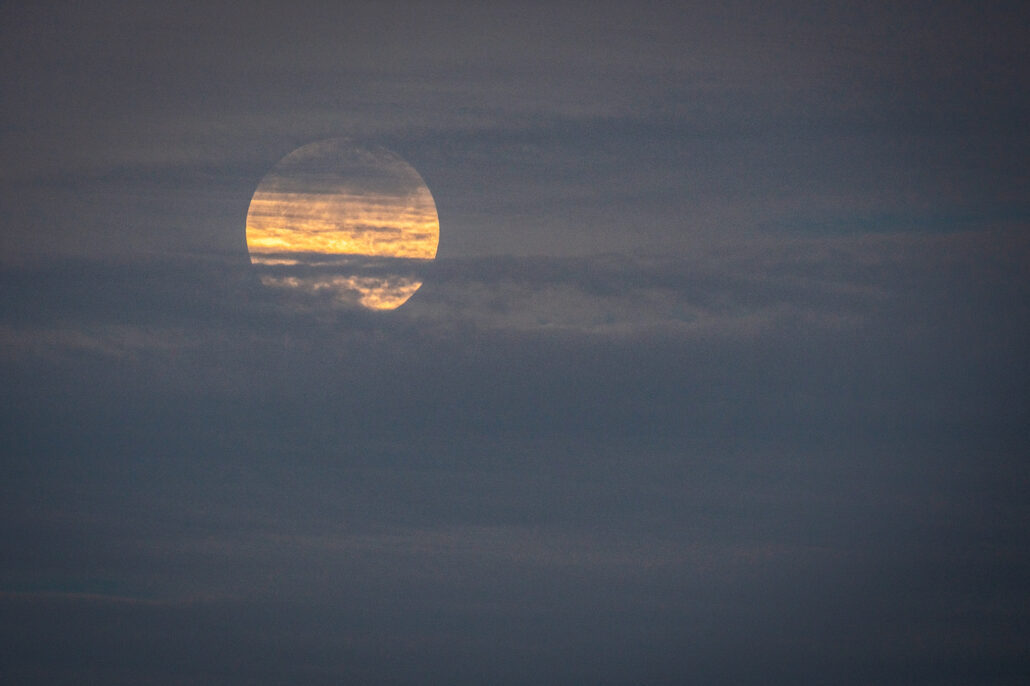
Gold Country
Autumn sunsets in the Gold Country are golden.
I was updating the Fall Color Map when I heard the call, “John, you should see the sunset.” That’s happened every night for the past week. Each night, I’d grab a camera and head outside to get a disappointing photograph.
They were never sharp, always too soft. Tonight, rather than just grab the camera and hand hold it, I took a moment to get the tripod out, set it up and mount the D850 to it.
The most important tool for a photographer is none of those. It’s his/her brain. Think your photo through. The best photographers anticipate the image and have everything ready: the tripod, the camera, the lens, the ISO, the mode, the location. Until tonight’s image, I’d been impatient. I’d forgotten to think.
On this image, I anticipated that the camera’s meter would misjudge the light. So, in Manual mode, I stepped the exposures (which are constantly shifting as the sun is setting) to get the right balance of sun and sky.
To avoid camera shake, I spun the knob to timer. Such exposures take longer to trigger than by using a remote, but when losing light, I never seem to find the remote and the timer’s always there.
A photographer’s rule about sunsets is that they keep getting better. Don’t put away the tripod and camera when you think you’ve got it. A minute later, it’ll be better.
Sunsets by themselves are beautiful, but boring. I look for something to be silhouetted in the foreground: a couple embracing, a sailboat, anything that has meaning. In this instance, the photo is about fall color so a blue oak was my foreground.
The blue oak is native and common to the Gold Country, though its fall colors are subtle. Silhouetting the tree made it more interesting than it is. I was in a blue oak woodland today and worried that one of the many acorns falling from their limbs might injure me, they fell with such surprising force. Birds and squirrels are busy gathering and hiding the acorns, often damaging street lamps, eaves and gutters in their effort to conceal them.
Gold Country woodlands became increasingly gilded this past week. The change has been more noticeable each day. From Oakhurst north on CA 49 to Downieville Near Peak to Peak colors are developing and at the end of each day, there’s a golden sunset to enjoy.
- Gold Country, CA 49 (1000′ to 3,000′) – Near Peak to PEAK (50-100%) Go Now.
Harvest Moon
This year’s Harvest Moon will be seen this coming Sunday (Oct. 9).
A Harvest Moon is the full moon closest to the Autumnal Equinox (Sept. 22), called such because it provided added illumination for farmers harvesting their crops.
Here’s a quick guide to taking sharp photographs of the moon.
Above is a link to taking photos of the moon with a cell phone and a telescope. If a cell phone is the only camera you own, try this approach.
Remember that whether you take a photo with your cell phone or a camera, the sky will need to be clear where you live to take the photo. If it is smoky, hazy or cloudy, you will be disappointed with the resulting image, and there’s little point frustrating yourself.
If the sky is clear and you want to photograph using a camera, you will need a DSLR, Mirror or Bridge camera to get a picture as seen above.
Attach a telephoto or zoom lens to the camera body. The larger the lens the better. Anything from 200 to 500 mm will get you close enough to the moon to see craters and shadow detail, less than that and you may again be disappointed.
A tripod is essential. Mount your camera and lens to a sturdy tripod. Most large telephoto lenses allow the lens to be mounted directly to a tripod. If you have such a lens, attach it to the tripod. If not, mount the camera body to the tripod. Be sure to tighten up all adjustment points so that the camera doesn’t move during the exposure and avoid using the center extension column, as that makes the tripod less stable.
Turn off all image or vibration stabilization on the camera and its lens. And, remove any filter from the lens. It will not provide any benefit and will reduce image clarity.
Set the camera’s image quality to RAW if you plan to print the image or to .jpg FINE/Large, if you plan to post the image online.
Get the camera out of Auto mode and set it to Manual (M). This is important, because automatic modes overwrite controls that must be set manually to get a sharp image.
Set the camera’s ISO to 100. Then, set the shutter speed to 125 and the aperture to F 11.
To focus the camera automatically, unlock the focus wheel and move the focus point to the middle of the moon as seen through the lens. The camera should be set to focus on one point, not the entire scene. If you will be focusing the camera manually, be sure to move set both the camera and lens to manual focus. When focusing, enlarge the image on the camera’s screen to confirm the image has been focused pin-sharp, or do your best looking through the lens to assure it’s sharply focused.
When you are ready to take the picture, release the shutter using a remote or the camera’s self-timer mode to eliminate camera shake. Do not release the shutter by pushing down on the shutter button as that creates camera shake. Instead, by using a remote or the self-timer, the camera takes its own picture. When using the self timer, set the camera to that mode then press the shutter once to focus and again to turn on the timer, then stand back and let the camera take the picture.
On a DSLR, you will be able to see the picture after it is taken. If the image is too bright, increase the shutter speed (letting less light into the camera). If too dark, reduce the shutter speed (letting more light into the camera).
Do not be concerned that, with these settings, the camera’s exposure meter will read as greatly underexposed. That’s normal for this situation.
If you miss shooting a picture of the Harvest Moon on Sunday, you’re in luck.
This year, the Harvest Moon will also be seen on Monday.
Have fun and good luck!
Fall Color Ethics
- The owner of what he described as the “iconic Hope Valley cabin” wrote to us recently complaining of people who “create a general nuisance, trespass all the way to my front door, leave trash, fly drones to my front door and have caused numerous car accidents.”
He asked that we cease publishing any photographs or reports about fall color surrounding his cabin, which sits near state highway 88 in the Hope Valley. We sympathize with his situation, though will continue to report on fall color seen from public roads and lands.
We did pledge, however, to reiterate these ethical standards to which all who appreciate fall color should adhere.
Leave No Trace – There are seven principles to this concept. We’ve adapted them to fit fall color viewing and photography. They include:
- Plan Ahead – by planning, you reduce the chance you might harm the environment you visit; bring the proper equipment to capture the scene sustainably;
- Travel on Durable Surfaces – walk on established trails; use established roads; be cautious not to create new ones or damage the environment;
- Dispose of Waste Properly – carry a litter bag and put all trash into it and it into a trash container; recycle recyclables;
- Leave What You Find – every leaf, branch, stone has a purpose; treasure them by leaving them behind; do not prune foliage for a better picture;
- Minimize Campfire Impacts – Consider fire conditions before starting a fire, only start one when permitted, use only sustainable fuels, use existing fire rings, mind your fire, never leave it smoldering, put it out completely with water and dispose of ashes properly.
- Respect Wildlife – keep your distance; never approach closer than they are comfortable; do not feed or pick up wildlife; travel quietly (except if necessary to warn animals);
- Be Considerate – do not trespass; respect private property; fly drones only where permitted, never over private property; should a drone crash on private property do not retrieve it without permission of the land owner;
To these seven principles, we add these ethical standards of nature and wildlife photography:
- Limit post processing to: cropping, color and white balance correction, and adjusting contrast, highlights, shadows, vibrance, sharpening and sizing;
- Do not stage photographs;
- Do not create composite images;
- Shoot what exists in reality, as you envision it;
- Employ caution when using filters; acceptable are polarizing, split neutral density, star and black and white filters (red, orange, yellow and green) when used appropriately, but warming, cooling, sunset and rainbow filters insert unnatural elements;
- Express your vision, not someone else’s.
Clearing Autumn Storm
In Ansel Adams’ classic 1937 photograph, Clearing Winter Storm, Yosemite Valley was dusted with snow. The photograph was taken in early December.
In Elliot McGucken’s tome to Adams’ photograph (seen above), Yosemite Valley is flecked with autumn color. The photograph was taken in early November.
The days that Adams and McGucken photographed from similar locations (Adams reputedly from Inspiration Point and McGucken from Tunnel View – near each other, but not the same locations) were near matches in cloud formations, though Adams’ scene was snowy and McGucken’s “autumny.”
These comparisons of McGucken’s images present near-duplicative color juxtaposed with black and white versions. Adams’ original was a gelatin silver print made from an 8 x 10″ negative, shot at 1/5-second at f16. McGucken shot with a Fujifilm GFX 100 medium format mirrorless digital camera, using a GF32-64mmF4 R LM WR lens at focal length 42.5 mm, equivalent to 32 mm on full frame, at f10, 1/160 and ISO 200.
McGucken exclaimed, “What a year it was! I am leaving Yosemite today after almost three weeks here. The fall colors were the best that I remember.” He continued that Peak is almost past, “but there is still a lot of glory to be found throughout the Park if one ‘Goes Now!'”
McGucken had a video camera running in time lapse while he was taking these pictures. Here is that footage. It demonstrates how clouds move and what’s needed to capture a moment of perfection. Patience is required. All good things come to those who wait.
- Yosemite Valley (4,000′) – Peak to Past Peak, GO NOW, You Almost Missed It.
![]()
PAN

Panorama of Yosemite Valley including Merced River, El Capitan, Three Brothers, Royal Arches and Sentinel Rock (11/8/21) Elliot McGucken
Pan was the Greek god of the wild, of fields, groves, wooded glens, the nature of mountain wilds and of … sex. Well, true to the Greek god, Elliot McGucken’s “PANoramic” photograph of Yosemite Valley is just plain sexy.
To make the panorama involved 13 shots with a wide angle 17mm lens on the Fuji GFX100 (17mm on medium format = 14mm on full frame field of view).Elliot was able to break out several individual images from the panorma, one of which follows. (click to enlarge)
Elliot said “Great light and high (yet, still) water made the glorious autumn reflections possible today.” That, of course, and a great photographer.
Elliot, you did Pan proud.
The Golden Hour
Elliot McGucken gives new meaning to The Golden Hour with these fresh images from Yosemite Valley. The golden hour is the hour following sunrise and preceding sunset, each day. It is when light is warmest.
He and John Chen were in Yosemite Valley at closing time, as John said, to down these “last call” shots.
Yosemite Valley’s black oak will continue to hold autumn color for another week or so, though much of the luster seen in these shots diminishes each day. (click to enlarge)
- Yosemite Valley (4,000′) – Peak to Past Peak, GO NOW, You Almost Missed It.
The Range of Light
Ansel Adams believed the Sierra Nevada (snowy range) to be misnamed. He contended that a better description would have been The Range of Light.
Adarsh Dattani and Elliot McGucken visited Yosemite Valley this past weekend and nothing they photographed dispels Adams’ contention.
![]()

